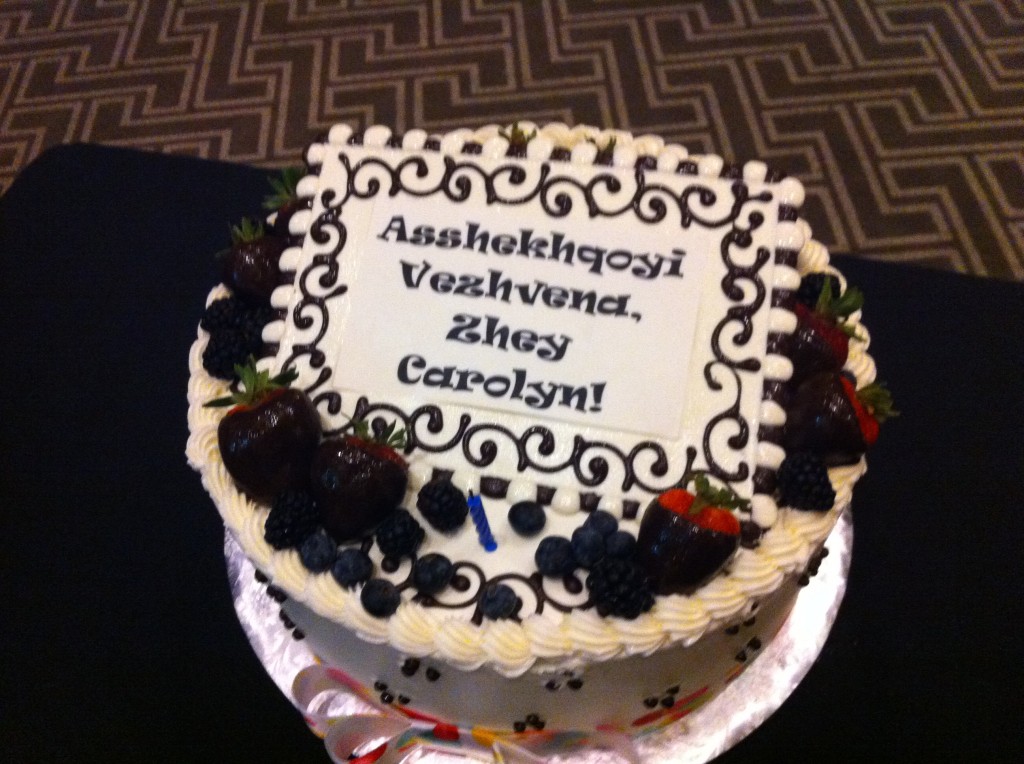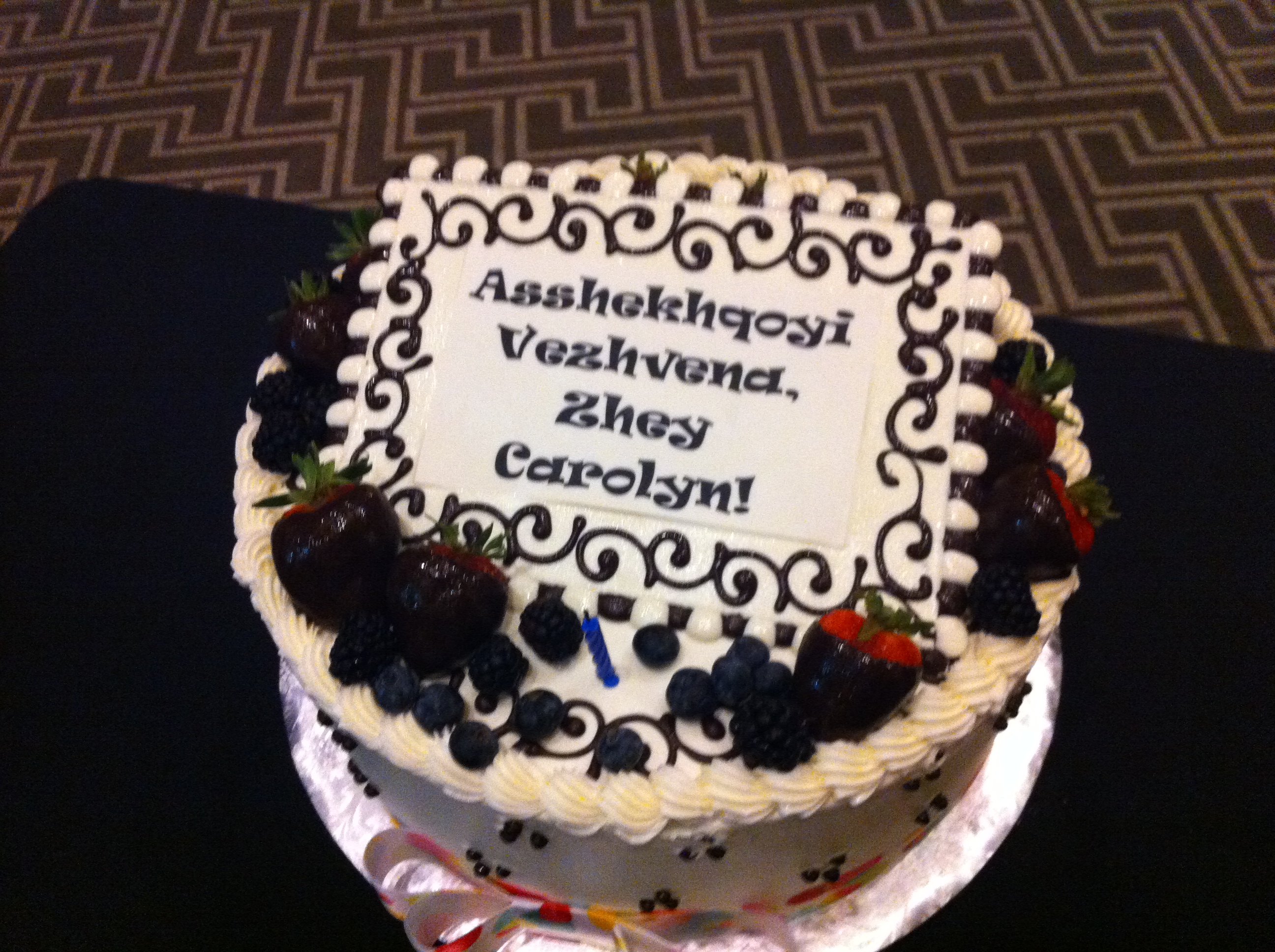It is known that the Dothraki are illiterate, in that the language has no written form. That need not stop us from imagining what a Dothraki script might look like, though—after all, fun is fun!
I received an e-mail recently from Carlos Carrion Torres from Brazil who, along with his daughter Patricia, created a Dothraki alphabet. We’ve already seen Qvaak’s stylized rendition of the Dothraki romanization system, but that was intended for our use outside the fictional universe the Dothraki inhabit. Carlos and Patricia did something a little different. They imagined how the Dothraki might get a writing system within the Universe of Ice and Fire. Here’s the backstory.
Jorah Mormont, who comes from Westeros, obviously spends a lot of time with the Dothraki, and so he attempts to create a script to encode the language. Coming from a place where an alphabet is used (true, Common is just English, but even if Common were a separate language, I don’t think it’s a stretch to assume that they’d use an alphabetic writing system), Jorah would naturally think to create an alphabet, as opposed to some other type of writing system. One option when doing so is simply to take one’s own writing system and adapt it to fit the new language. As Carlos and Patricia have imagined it, though, Jorah decided to take the concept of an alphabet and create something new—something more suited to the Dothraki lifestyle. The result is pretty wild.
While it’d be tough to reproduce everything detailed in the document I received here on the page, you can download a detailed description of the entire system here, and you can read a full write-up of the system over at Omniglot. Though alphabetic, the script is better suited to Dothraki than the romanization, for example, because there are single characters assigned to each of the sounds I spell with digraphs (i.e. th, sh, zh, ch and kh). Plus, doubled vowels are spelled with a single character. The glyphs themselves are stylized to look (to my mind, at least) rather like sword slashes, and they’re based on the shapes of culturally-relevant objects. Here’s one example from the .pdf:
I’ve also got a sample phrase to show you. Below is the transliteration of Asshekhqoyi vezhvena! (punctuation included) into Carlos and Patricia’s script, which they call simply “Dothraki”:

And while we’re on the subject of birthdays, check out this picture I got from a fan via e-mail. Apparently Carolyn is a big Game of Thrones fan, so they decide to wish her a Dothraki-style happy birthday on the cake:

Athdavrazar! That is tight! So, wherever you are, zhey Carolyn, asshekhqoyi vezhvena! Hope your birthday was not a dull affair. Hajas!
[Note: Just as a reminder, this writing system is not official. Officially, the Dothraki have no writing system, and won’t unless George R. R. Martin decides they should have one at some point in time and it’s created. I’m sharing this here as, essentially, fan art. And, of course, the existence of one unofficial system oughtn’t preclude anyone from creating more unofficial systems—after all, creating writing systems is a lot of fun!]


Isn’t it a bit unfortunate to have a single glyph for double vowels since that might lead someone to believe that they represent a long vowel when double vowels are actually pronounced as two separate vowels?
I think it’s a good orthographic convention, kind of like æ and œ in Latin. Saves a little bit of space—and the glyphs are rather large.
Ya, I suppose though the comparison isn’t exact as æ or œ are, as I understand it, diphthongs which is a single sound rather than two separate sounds. For someone who knows the phonology I don’t think it’s a problem but I do think the possibility of confusion remains.
Wow! That script is really beautiful and it’s derivations is simply fantastic! However I think that the script would look even better if it was written vertically (specifically top to bottom, with columns read from right to left), keeping the current orientaiton of the characters (except for the “space” mark).
And, once again, congratulations on your conlang’s success!
Wow! That script is really beautiful and it’s derivations is simply fantastic! However I think that the script would look even better if it was written vertically (specifically top to bottom, with columns read from right to left), keeping the current orientaiton of the characters (except for the “space” mark).
And, once again, congratulations on your conlang’s success!
Very interesting! I have never cared much for scripts that use a lot of curves. They tend to be harder to memorize and draw than something that uses more ‘square’ or ‘symbolic’ glyphs. But this one, especially with the reference to the origins of the shapes of the glyphs, I think I could learn more easily. The single glyph-per-digraph is a nice thing as well. I noticed in the examples though, that the symbols tend to follow the ‘latinization’ more than I would have expected in the case of doubled consonants like ‘ssh’. I would have expected sh-sh glyphs here, instead of s-sh. If I had created this script, I would have also used separate glyphs for flipped and rolled r’s, even though the treatment of the r sound is easily predictable. In any case, nice work, Carlos and Patricia!
Great work, but not particularly aesthetic to me. But then I’m one for style over content sometimes.
Still waiting for you, zhey David, to post the script you had finished and were waiting for the couple to get tatts with. ^^
The script very aesthetic and stylish, but it’s quite unlikely that barbaric nomads such as Dothraki would be literate and have an alphabet or any need for writing at all.